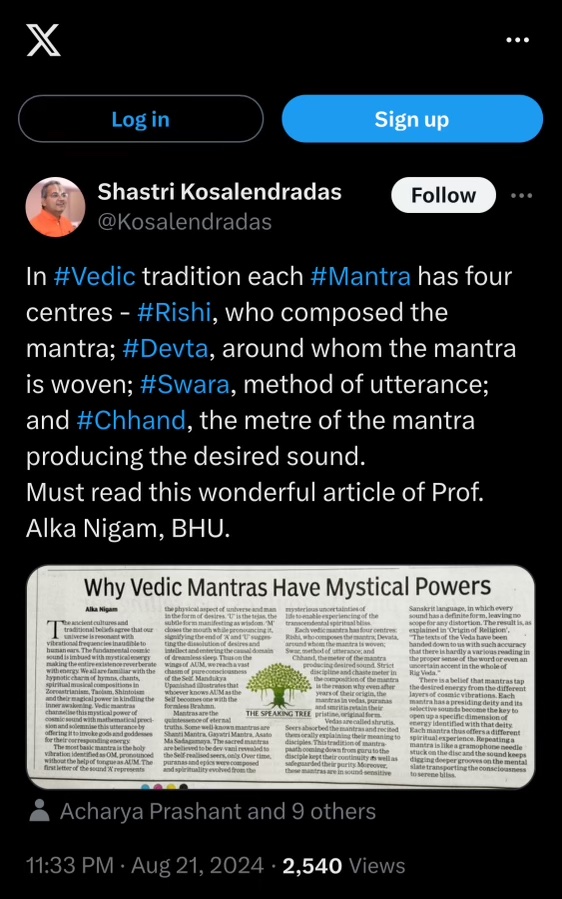Ornithologists have observed that birds die fighting their own reflection as enemy in the mirror windows. In Greek mythology Narcissus, a handsome youth fell in love with his own image reflected in a pool and became intoxicated with it to an extent of pathological self admiration and subsequently ended as a model in his name as Narcissistic personality disorder. For the quantum physicist the nature of material world is illusion because everything in this creationis related to constantly changing energy in various ways from one form to another. Plato thinks the material objects to be imperfect hence unreal. His disciple Aristotle viewed the world as real but only when the flawed material objects have reached their ultimate potentiality that lies latent within all the organisms. His real world exists in its perfect idealized perception. Similarly NOUMENA of Kant refers to an unknowable, unseen reality with phenomenal attributes underlying all manifested matter. These are some interesting vignettes presenting different angles to perceive this world of imperfect reflections with which we the lesser mortals play hide and seek throughout our lives and still do not reach at a definite conclusion in weaving a real image of the world we live in. Beliefs of various levels of minds, these scattered opinions have some truth but the absolute convincing truth is resolved in two aphorisms- BRAHM SATYA JAGAT MITHYA given by Adi Shankara who expounded the theory of Advaita. These two bold statements not only settle the wavering minds but also educate us about the underlying fundamental reality that governs the universe.
The truth of the first statement though abstract is easy to grasp for its easy reasoning revealed in the Hindu scriptures. Consisting of two Sanskrit syllables Brahman implies the highest Universal Principle. The root of its first syllable is ‘brihi’ meaning expanding or growing. The suffix ‘man’ means some manifest form of definite power without limitation. This is known as Brahman. Taittiriya Upanishad says that Brahman is the one in which all beings take birth, live and into which they merge. The Aittareya Upanishad speaks of Brahman as Supreme Consciousness. The Brihadaranyaka Upanishad declares AHAM BRAHMASMI linking the Self and the Supreme Consciousness in one. These reflections are the personal realized experiences of our rishis therefore, cannot be dismissed. In the perfect stillness of body and mind when we are in an out –of – body state, we too can consciously experience the same truth given by the already experienced ones. After death everything that is us is earth to earth, but our consciousness is absorbed into the all pervading Consciousness. We are living in this world very much like waves of the sea separated for a while but into which get united again. This Supreme Consciousness is the inconspicuous Brahman, the only true Reality.
The second phrase of the statement is about the manifested jagat –a seemingly real play-ground of the unreal drama of transient beings hence a perfect charade. The logic of this phrase has an easy -to –understand- logic. The cosmos that is all around known as jagat is so beautiful and organized so perfectly that it could only be created by an intelligent, perfect Reality that comes first in the name of Brahman. Matter that is created comes next. Since matter consists of atoms, protons and electrons it is limited and perishable but mesmerizingly beautiful to the extent of being magical. It is perceptible only in the present. It’s tangibly non- existent past can only be remembered and future still in the air can only be imagined. Encircled in this constant flux of time – period, the entire jagat is ever changing, with repeated cycles of decay and revival of all matter. In this vortexlife is, as Paramhansa Yoganandaji says, like a cosmic picture – show and we play according to the law of life. But the question is raised if life is a dream why pain is so real. Guruji’s reply is: “A dream head struck against a dream wall causes dream pain.”
Still this world is a gift to us by God given for a purpose. Life has to be celebrated. The very first shloka of the first Upanishad opens the doors of Upanishadic wisdom – TAYAKHTEN BHUNJHITA -to enjoy the glories of the world in much the same way as the age-old metaphor of lotus in a murky pond implies – to be in the world but not of it. The doctrine of non- attachment, the summum bonum of Shrimadbhagvat GEETA, directs mankind in the same direction and can satisfy man’s intrinsic and fervently burning desire felt by Shelly as:
The devotion to something afar
From the sphere of sorrow.
This world is unreal where we are playing with the drama of five elements. Brahman is the only Reality. To realize this consciousness is the raison d’etre of this life.

Leave a Reply